15
The author perfected this article on December 30, 2019
Catalog
I Introduction | |
II Switch Transistor Loss | 1. Equivalent Circuit of Switch Transistor |
2. Switch Transistor Turn-on/off Processes-pure Resistive Load | |
3. Switch Transistor Turn-on/off Processes-flyback Output Power Supply | |
4. Switch Transistor Turn-on/off Processes-forward Output Power Supply | |
5. Effect of Switching Time on Switching Loss | |
III Switch Mode Power Supply Transformer Loss | 1. Magnetic Hystersis Loop of Unipolar Switch Mode Power Supply Transformer Core |
2. The Selection of the Transformer Cores | |
I Introduction
The losses of switching power supply mainly come from three components: switch transistor, transformer and rectifier diode.
Switch transistor loss is mainly divided into turn-on/off losses two aspects. The loss of the switching transformer mainly includes hysteresis loss, eddy current loss and copper loss. The loss of rectifier diodes is mainly composed of two parts: forward conduction loss and reverse recovery loss.
Transistor as Switch
The loss of the switch transistor is mainly related to the on/off switching times, as well as the operating frequency and load characteristics.
If the switching time is doubled, the loss of the switch tube will increase by about 2~3 times, and the loss of the switch transistor is directly proportional to the operating frequency of the switching power supply. The eddy current loss of the switching transformer and the copper loss of the transformer coil are directly proportional to the square of the operating frequency, while the hysteresis loss is proportional to the magnetic flux density raised to the 1.6 power in addition to the operating frequency. The forward loss of the rectifier diode is related to the forward voltage drop of the rectifier diode, while the reverse recovery loss is related to the reverse recovery time of the diode.
The above three losses account for more than 20% of the total loss of switching power supply. How to reduce the loss of switch transistors and transformers to improve the efficiency is a problem that every designer should consider.
II Switch Transistor Loss
The losses of the switch transistor mainly include turn-on and turn-off losses.
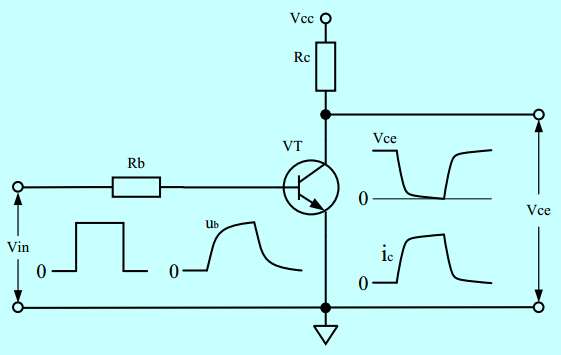
Switch Transistor Circuit
1. Equivalent Circuit of Switch Transistor
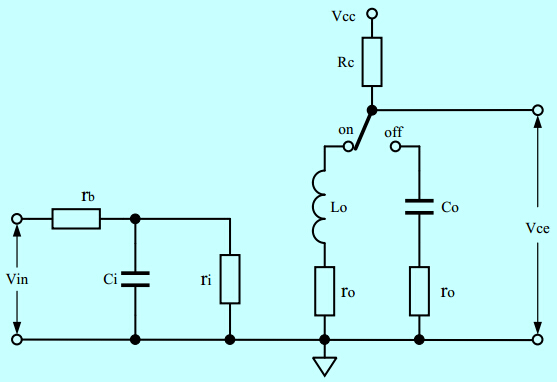
Equivalent Circuit of Switch Transistor
The transistor (or MOSFET) input can be equivalent to a capacitor in parallel with a resistor, and its input voltage is:

When the transistor (or MOSFET) is on, the output end can be equivalent to an inductor in parallel with a resistors; when the transistor is off, it can be equivalent to a capacitor in parallel with a resistor; and its output voltage is:

The collector current is:

2. Switch Transistor Turn-on/off Processes-pure Resistive Load
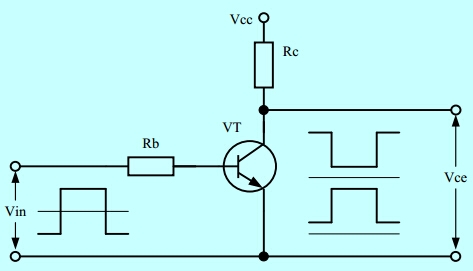
Purely Resistive Switching Circuit
Transistor switching characteristic parameters:
(1) Delay time td
The time required for the collector current Ic to rise to 10% of its maximum value Icm, when the input signal Vin becomes positive.
(2) Rise time tr
The time taken by the collector current Ic to rise from 10% to 90% of its maximum value Icm.
(3) Storage time ts
The time required for the peak collector current Icm to drop to 90% of its value, when the input signal Vin becomes negative.
(4) Fall time tf
The time taken by the collector current Ic to drop from 90% to 10% of its maximum value Icm.
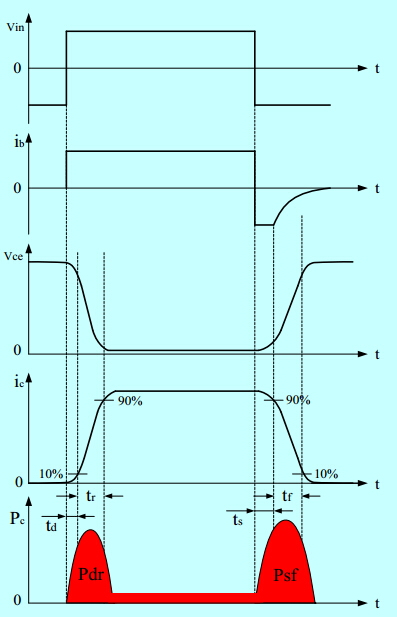
Switching Loss with Purely Resistive Load
3. Switch Transistor Turn-on/off Processes-flyback Output Power Supply
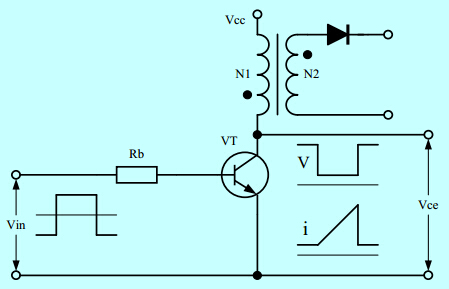
Flyback Switching Power Supply
With a flyback switching power supply, the current flowing through the switch transistor is a sawtooth wave. At first the switch transistor is turned on, the current flowing through the primary coil of the transformer is small, but just before the transformer is turned off it becomes very large. Therefore, the loss of the transistor during the on-time (td and tr) is small, and the loss during the off-time (ts and tf) is very large, which is a difference of several tens of times.
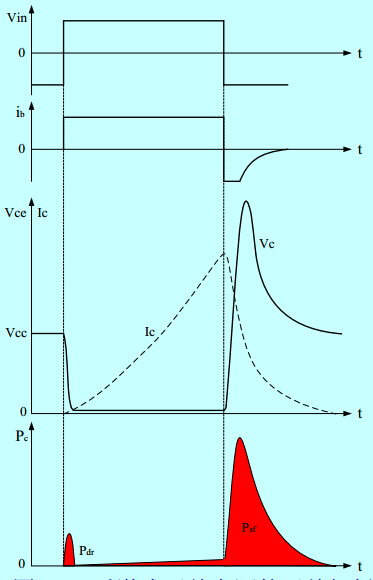
Switching Loss of Flyback Switch Mode Power Supply
4. Switch Transistor Turn-on/off Processes-forward Output Power Supply
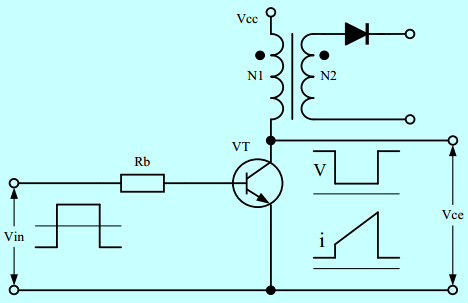
Forward Switching Power Supply
With a forward switching power supply, the current flowing through the switch transistor is a trapezoidal waveform. At first the switch tube is turned on, the current flowing through the primary coil of the transformer is relatively large. It becomes larger just before the transistor is turned off. Therefore, the loss of the switch transistor during the initial conduction period (td and tr) and the turn-off period (ts and tf) is all larger than that of the flyback switch-mode power supply.
One way to reduce the switching losses is to minimize the turn-on/off time of the transistor as much as possible, especially the turn-off time, and the other is to reduce the operating frequency.
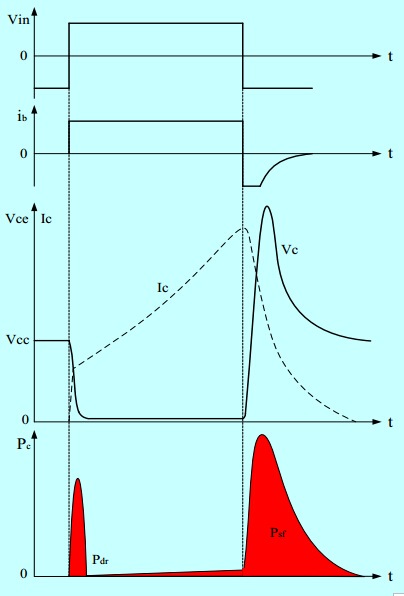
Switching Loss of Forward Switch-mode Power Supply
5. Effect of Switching Time on Switching Loss
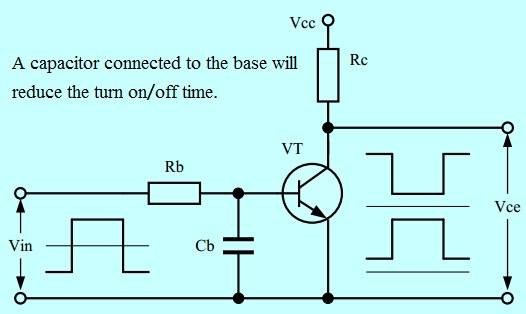
Increasing the Turn-on/off Time will Meanwhile Increase the Switching Loss
The switching loss of the purely resistive load is proportional to the four switching times of the switch transistor. So increasing the turn-on/off time of the transistor will meanwhile reduce the voltage and current rise rates of the switched circuit. It is also beneficial to reduce the radiation interference of the switching power supply, but it will increase the switching loss of the transistor.
In inductive loads, the switching losses of forward and flyback switching power supply are different.
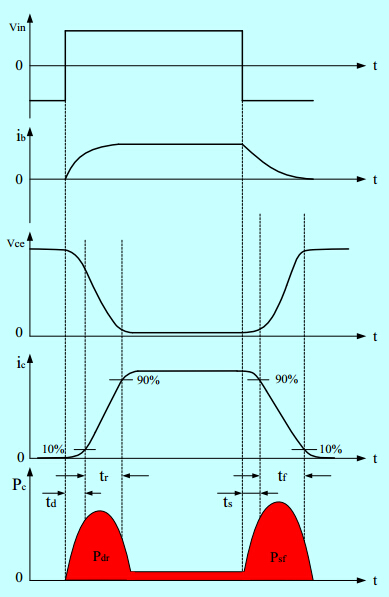
Waveforms and Losses at Various Points of the Switch Circuit
III Switch mode power supply transformer loss
1. Magnetic Hystersis Loop of Unipolar Switch Mode Power Supply Transformer Core
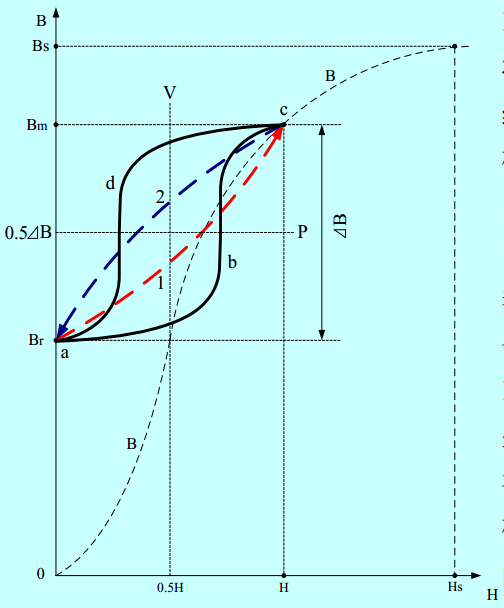
Magnetic Hystersis Loop of Unipolar Switch ModePower Supply Transformer Cores
The figure above shows the magnetization curve (hysteresis loop) of the transformer core when the unipolar switch-mode power supply is in normal operating condition. When the excitation current magnetizates the core, the magnetic flux density changes along the magnetization curve abc. In this case, the magnetic flux density increases with the magnetic field strength. When demagnetizing, the magnetic flux density and magnetic field strength change along the magnetization curve cda. In this case, the magnetic flux density decreases with the magnetic field strength.
On the one hand, when the pulse width is constant, the magnetic field strengths generated by the excitation current and the demagnetization current are equal in magnitude but opposite to the direction, so that the two terminals (a and c) of the hysteresis loop are substantially stable. on the other hand, both ends of the magnetic hysteresis loop will change with the pulse width.
2. The Selection of the Transformer Cores
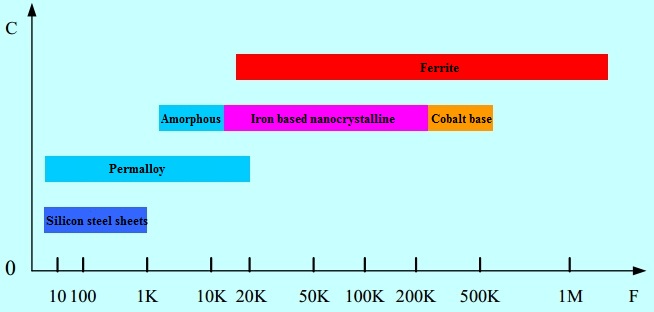
Working Frequency Range of Various Transformer Cores
Regarding the selection of transformer core, we mainly consider the following aspects, such as volume, working efficiency, reliability, cost and so on, which will inevitably involve many parameters of transformer core, such as: maximum magnetic flux density Bm (or magnetic saturation flux density Bs), the maximum magnetic permeability μm, effective magnetic permeability μe, the coercivity Hm and eddy current loss, etc. These parameters are basically related to the operating frequency, especially the eddy current loss Pe and hysteresis loss Ph.
Switch Mode Power Supply Measurements and Analysis
IV Book Recommendation
1. Switch-Mode Power Supplies Spice Simulations and Practical Designs
It is a comprehensive resource on using SPICE as a power conversion design companion. This book uniquely bridges analysis and market reality to teach the development and marketing of state-of-the art switching converters. Invaluable to both the graduating student and the experienced design engineer, this guide explains how to derive founding equations of the most popular converters…design safe, reliable converters through numerous practical examples…and utilize SPICE simulations to virtually breadboard a converter on the PC before using the soldering iron.
by Christophe Basso
2. Power Converters with Digital Filter Feedback Control 1st Edition
This book presents a logical sequence that leads to the identification, extraction, formulation, conversion, and implementation for the control function needed in electrical power equipment systems. Also it builds a bridge for moving a power converter with conventional analog feedback to one with modern digital filter control and enlists the state space averaging technique to identify the core control function in analytical, close form in s-domain (Laplace). It is a useful reference for all professionals and electrical engineers engaged in electrical power equipment/systems design, integration, and management.
by Keng C. Wu
You May Also Like:
Switched Mode Power Supply: SMPS Topologies & Formulas
Discussions on Switching Power Supply Topologies
Ten Principles of DC/DC Conversion Circuit Design
What is Pulse Width Modulation(PWM)
Ordering & Quality
| Photo | Mfr. Part # | Company | Description | Package | Qty |
|
MPC852TCVR80A | Company:NXP / Freescale | Remark:IC MPU MPC8XX 80MHZ 256BGA | Package:256-BBGA |
MPC852TCVR80A Datasheet |
In Stock:811 Inquiry |
Inquiry |
|
MCF5206ECAB40 | Company:Freescale Semiconductor - NXP | Remark:IC MCU 32BIT 160QFP | Package:QFP160 |
MCF5206ECAB40 Datasheet |
In Stock:1276 Inquiry |
Inquiry |
|
XC3S50A-4VQG100C | Company:Xilinx | Remark:IC FPGA 68 I/O 100VQFP | Package:100-TQFP |
XC3S50A-4VQG100C Datasheet |
In Stock:8618 Inquiry |
Inquiry |
|
DS1818-10 | Company:Maxim Integrated | Remark:IC 2.88V W/PB 10% TO92-3 | Package:TO-226-3, TO-92-3 (TO-226AA) |
DS1818-10 Datasheet |
In Stock:1150 Inquiry |
Inquiry |
|
TMMBAT46FILM | Company:STMicroelectronics | Remark:DIODE SCHOTTKY 100V 150MA MINMLF | Package:DO-213AA (Glass) |
TMMBAT46FILM Datasheet |
In Stock:48488 Inquiry |
Inquiry |
|
MC34905CS5EK | Company:NXP / Freescale | Remark:IC SBC HIGH SPEED CAN 5V 32SOIC | Package:32-BSSOP (0.295", 7.50mm Width) Exposed Pad |
MC34905CS5EK Datasheet |
In Stock:88 Inquiry |
Inquiry |
|
MCF5206ECAB40 | Company:Freescale Semiconductor - NXP | Remark:IC MCU 32BIT 160QFP | Package:QFP160 |
MCF5206ECAB40 Datasheet |
In Stock:1276 Inquiry |
Inquiry |
|
MC711K4CFNE3 | Company:NXP / Freescale | Remark:IC MCU 8BIT 24KB OTP 84PLCC | Package:84-LCC (J-Lead) |
MC711K4CFNE3 Datasheet |
In Stock:7832 Inquiry |
Inquiry |
|
MPC8280VVQLDA | Company:NXP / Freescale | Remark:IC MPU MPC82XX 333MHZ 408TBGA | Package:480-LBGA |
MPC8280VVQLDA Datasheet |
In Stock:744 Inquiry |
Inquiry |
|
MC68360ZQ25L | Company:Freescale Semiconductor - NXP | Remark:IC MPU M683XX 25MHZ 357BGA | Package:BGA |
MC68360ZQ25L Datasheet |
In Stock:811 Inquiry |
Inquiry |